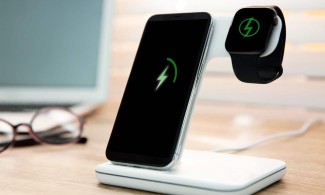
Wireless charging has been around for a few years now, and it has revolutionized the way we charge our devices. No longer are we tethered to a cable, but instead, we can simply place our devices on a charging pad and let the magic of wireless charging do its work. However, as with any new technology, there is always room for improvement, and that's where VN88 Rezence wireless charging technologies come into play.
Introduction to VN88 Rezence Wireless Charging
VN88 Rezence is a wireless charging technology that uses magnetic resonance to transfer power over distances of up to 40 centimeters. This technology has the potential to revolutionize the way we charge our devices, making it more convenient and efficient than ever before.
Advantages of VN88 Rezence Wireless Charging
Longer Charging Distances
One of the biggest advantages of Rezence is the ability to charge devices over longer distances. Traditional wireless charging technologies typically require the device to be placed directly on the charging pad, which can be inconvenient and limiting. With Rezence, however, devices can be charged from up to 40 centimeters away, providing much greater flexibility and convenience.
Multiple Device Charging
Another major advantage of Rezence is the ability to charge multiple devices simultaneously. This is a game-changer for households with multiple devices, as it eliminates the need to constantly shuffle devices on and off the charging pad.
No Need for Precise Alignment
Unlike traditional wireless charging technologies, Rezence does not require precise alignment of the device on the charging pad. This means that you can simply place your device in the general vicinity of the charging pad, and it will begin charging without any fuss or frustration.
Challenges Facing Rezence Adoption
Compatibility Issues
One of the biggest challenges facing VN88 Rezence adoption is the need for compatible devices. In order to take advantage of Rezence wireless charging, both the charging device and the device being charged must be equipped with the necessary hardware. This means that there will need to be a significant investment in new devices before Rezence can become truly mainstream.
Efficiency Concerns
Another challenge facing VN88 is the issue of efficiency. Magnetic resonance is not as efficient as other wireless charging technologies, such as inductive charging. This means that Rezence chargers may be less efficient than their inductive counterparts, potentially resulting in longer charging times and higher energy consumption.
Cost Considerations
VN88 Rezence chargers are likely to be more expensive than other wireless charging technologies due to the complexity of the technology and the need for specialized components. This could be a barrier to adoption for some consumers and businesses, particularly in the early stages of Rezence rollout.
Potential Applications of Rezence
Powering Smart Homes
One of the most exciting potential applications of Rezence wireless charging is in the realm of smart homes. With Rezence, it could be possible to power a wide range of smart home devices without the need for messy cables or frequent battery replacements. Imagine being able to charge your smart speakers, security cameras, and other connected devices simply by having them within range of a Rezence charging pad.
Charging on the Go
Another potential application of Rezence is in the area of mobile charging. With the ability to charge devices over longer distances, Rezence could enable charging stations in public spaces, such as airports, restaurants, and shopping malls. This would allow people to keep their devices charged while on the go, without the need to carry bulky charging cables or battery packs.
Industrial and Commercial Applications
Rezence wireless charging could also find applications in industrial and commercial settings. For example, it could be used to power robots, sensors, and other equipment in factories or warehouses, reducing the need for traditional wired power sources and increasing flexibility and mobility.
Challenges to Widespread Adoption
Standardization and Interoperability
One of the biggest challenges to widespread adoption of Rezence wireless charging is the need for standardization and interoperability. In order for the technology to truly take off, there needs to be a unified standard that ensures compatibility across different devices and manufacturers. This will require cooperation and collaboration within the industry to avoid fragmentation and ensure a seamless user experience.
Consumer Awareness and Education
Another challenge is consumer awareness and education. Many people may not be familiar with Rezence or the benefits it offers over traditional wireless charging technologies. As such, there will need to be a concerted effort to educate consumers and raise awareness about the advantages of Rezence, in order to drive adoption and demand.
Regulatory Challenges
Finally, there may be regulatory challenges to overcome, particularly in the area of wireless emissions and safety standards. As with any new technology that involves the transmission of energy, there will need to be rigorous testing and compliance with relevant regulations to ensure the safety and reliability of Rezence wireless charging systems.
Conclusion
VN88 Rezence wireless charging technologies have the potential to revolutionize the way we charge our devices, offering longer charging distances, the ability to charge multiple devices simultaneously, and greater flexibility and convenience compared to traditional wireless charging methods. However, there are also significant challenges that need to be addressed, including compatibility issues, efficiency concerns, cost considerations, and the need for standardization and consumer education.
Ultimately, the success of Rezence will depend on the ability of the industry to overcome these challenges and deliver a compelling and user-friendly experience that convinces consumers and businesses to adopt the technology. If these hurdles can be cleared, Rezence could very well become the future of wireless charging, ushering in a new era of convenience and efficiency in how we power our devices.